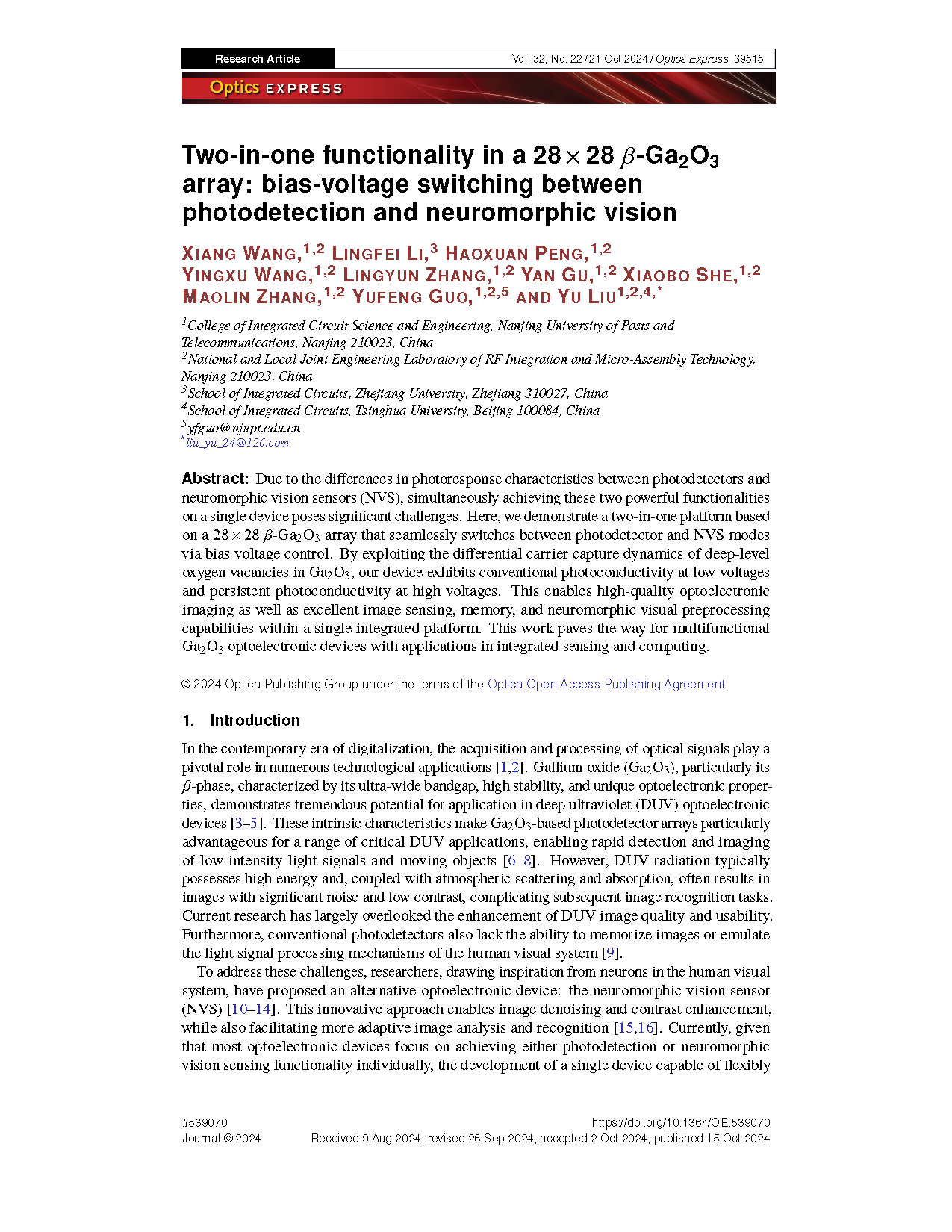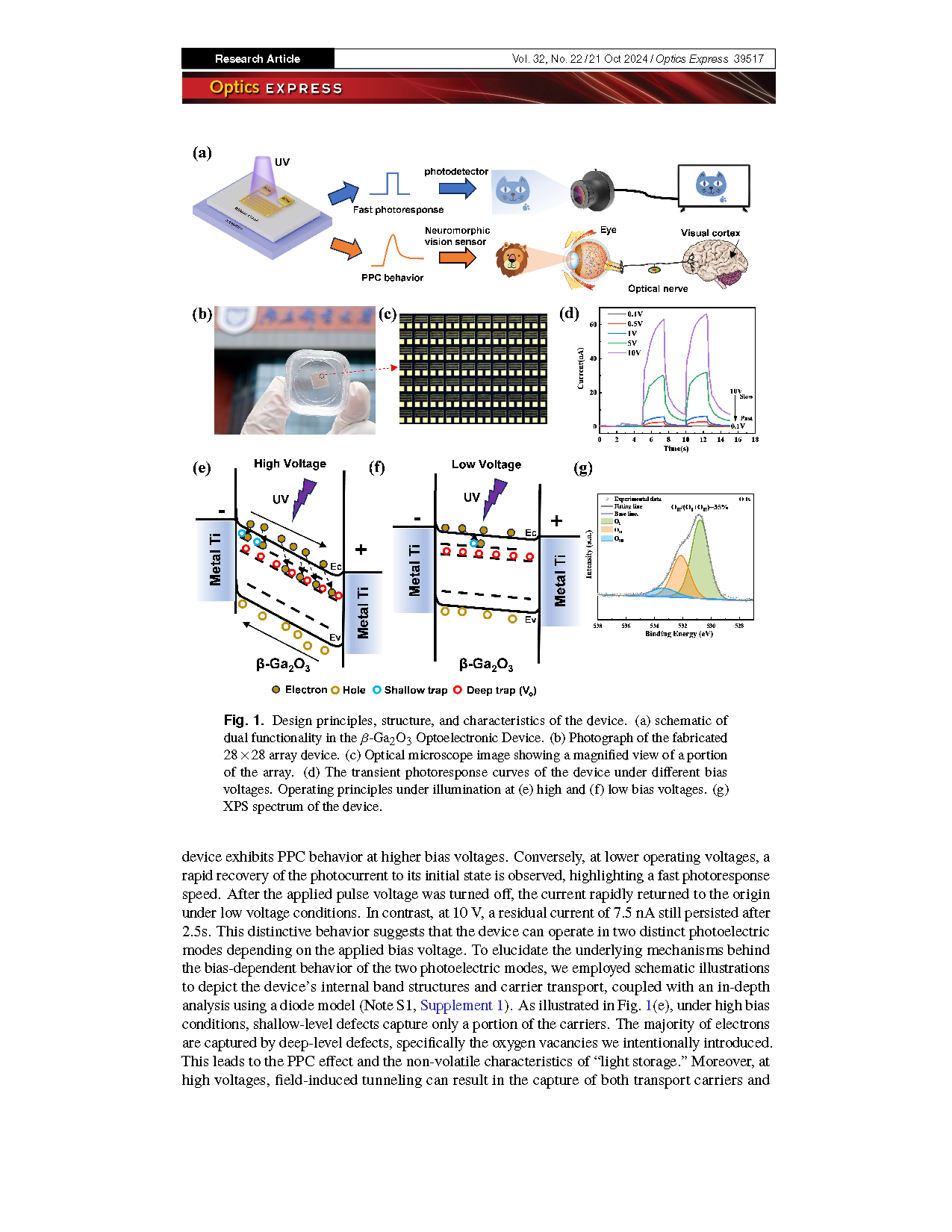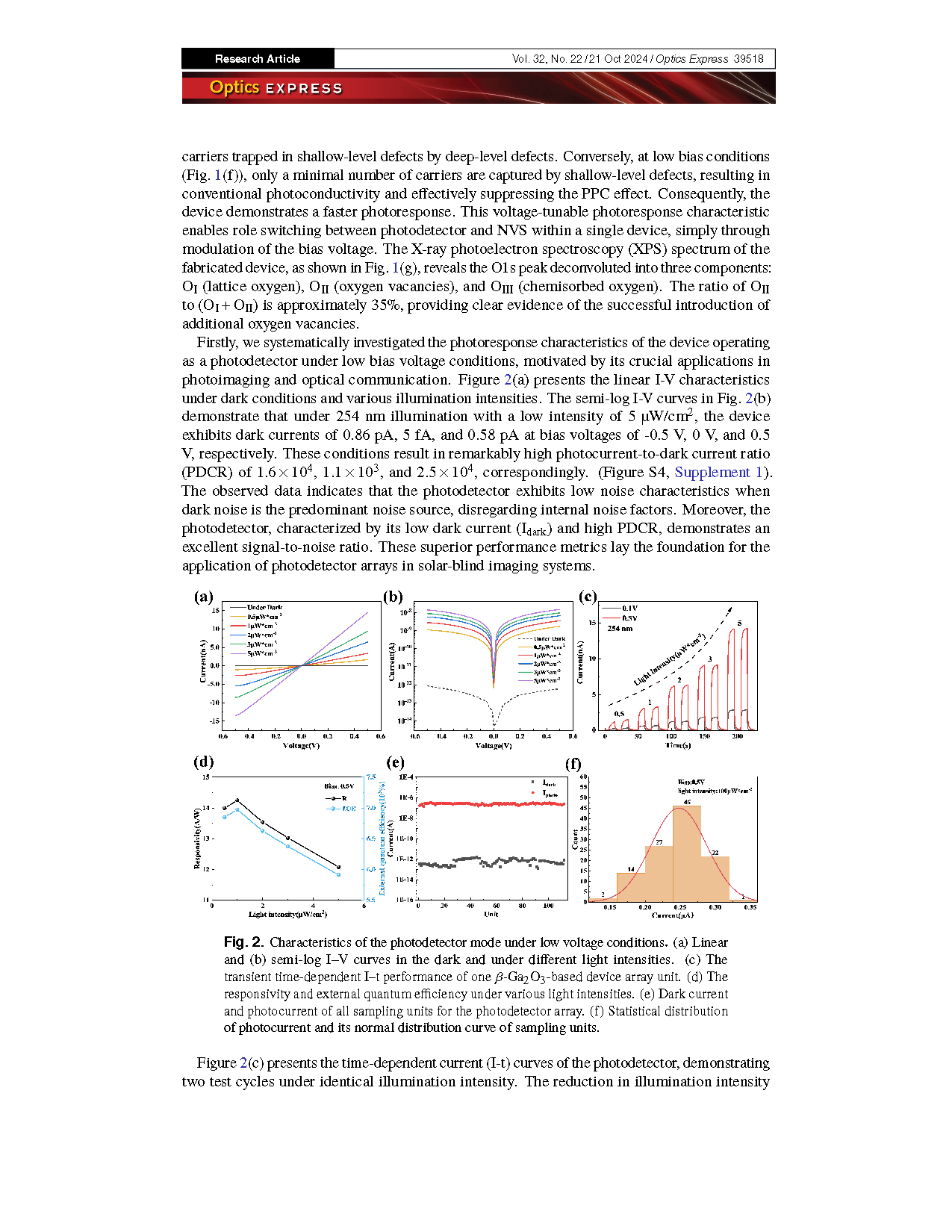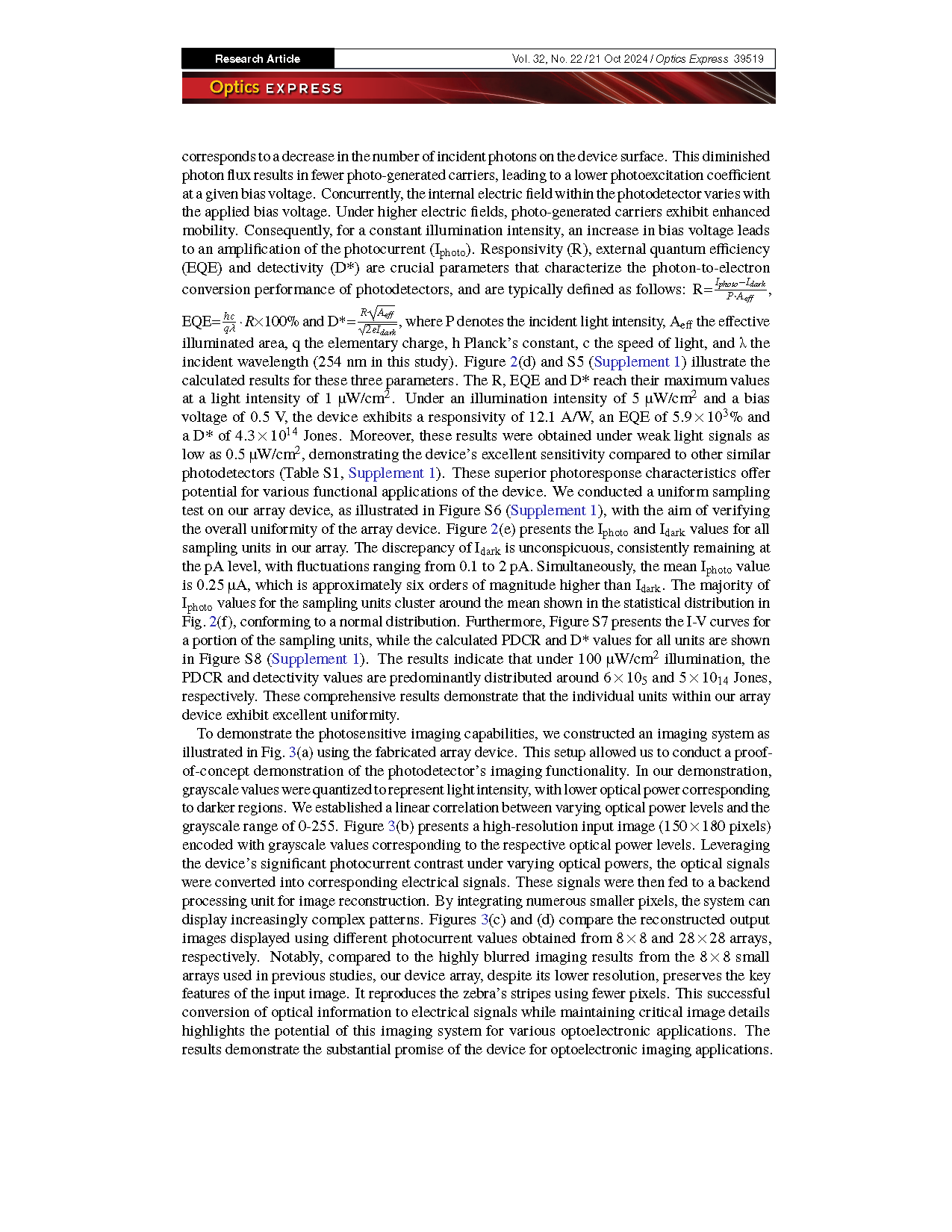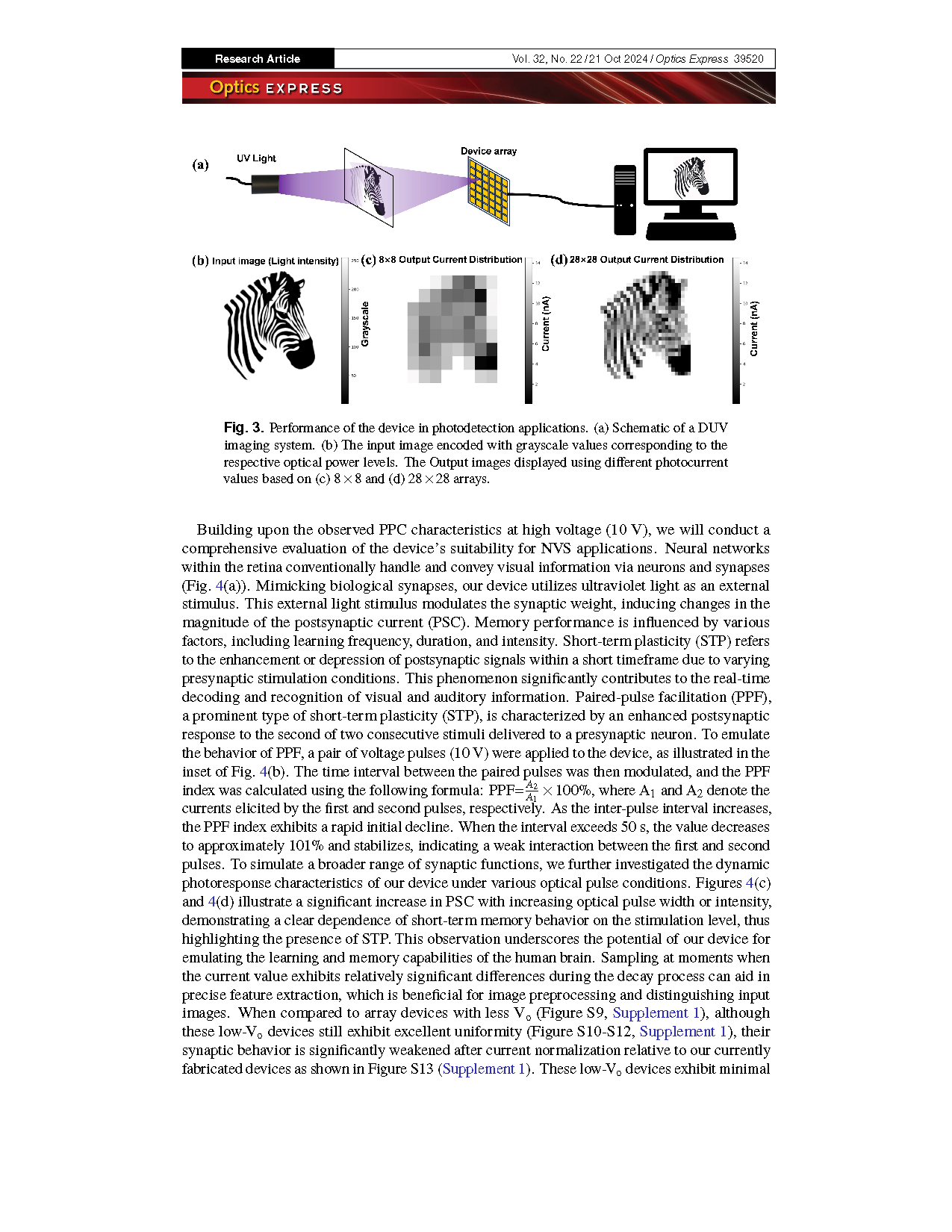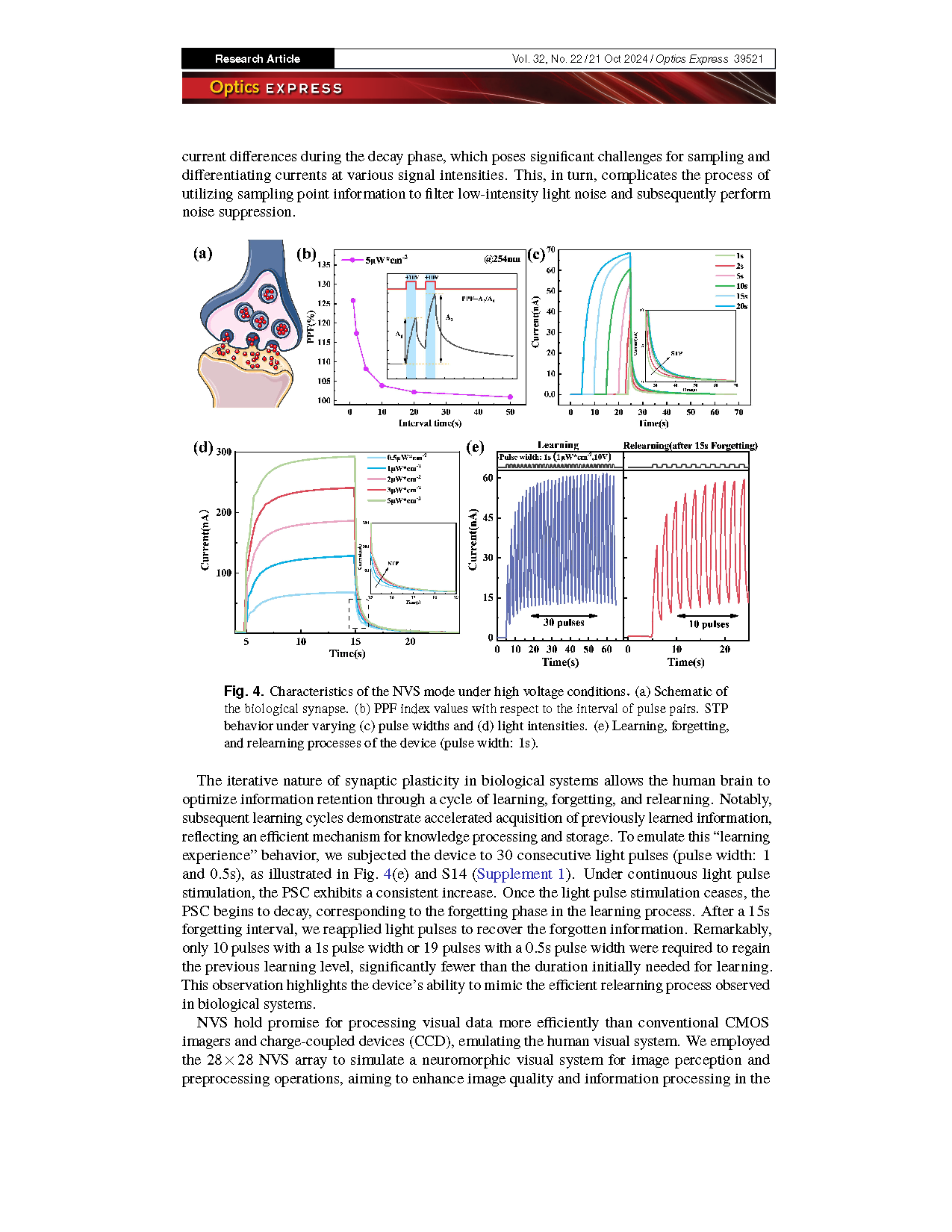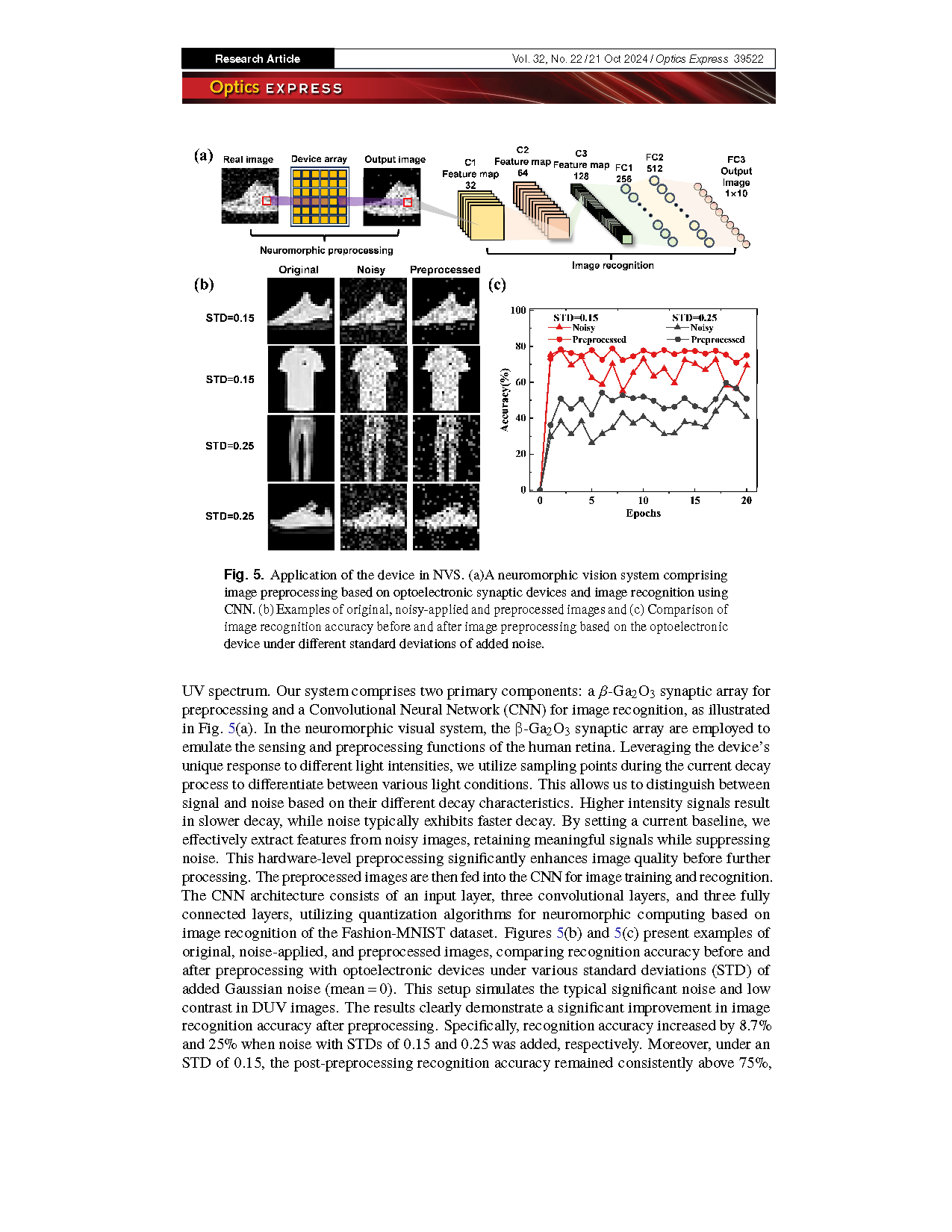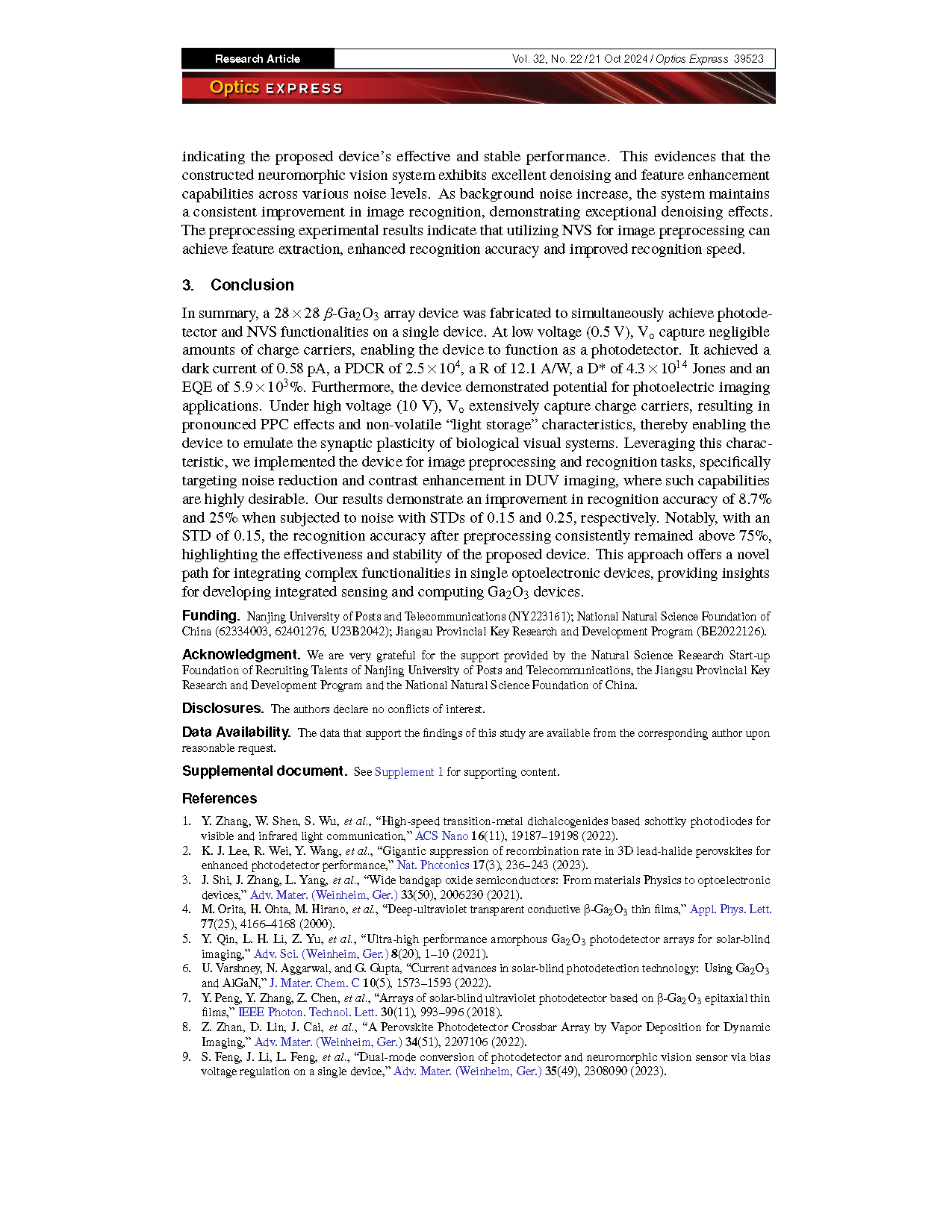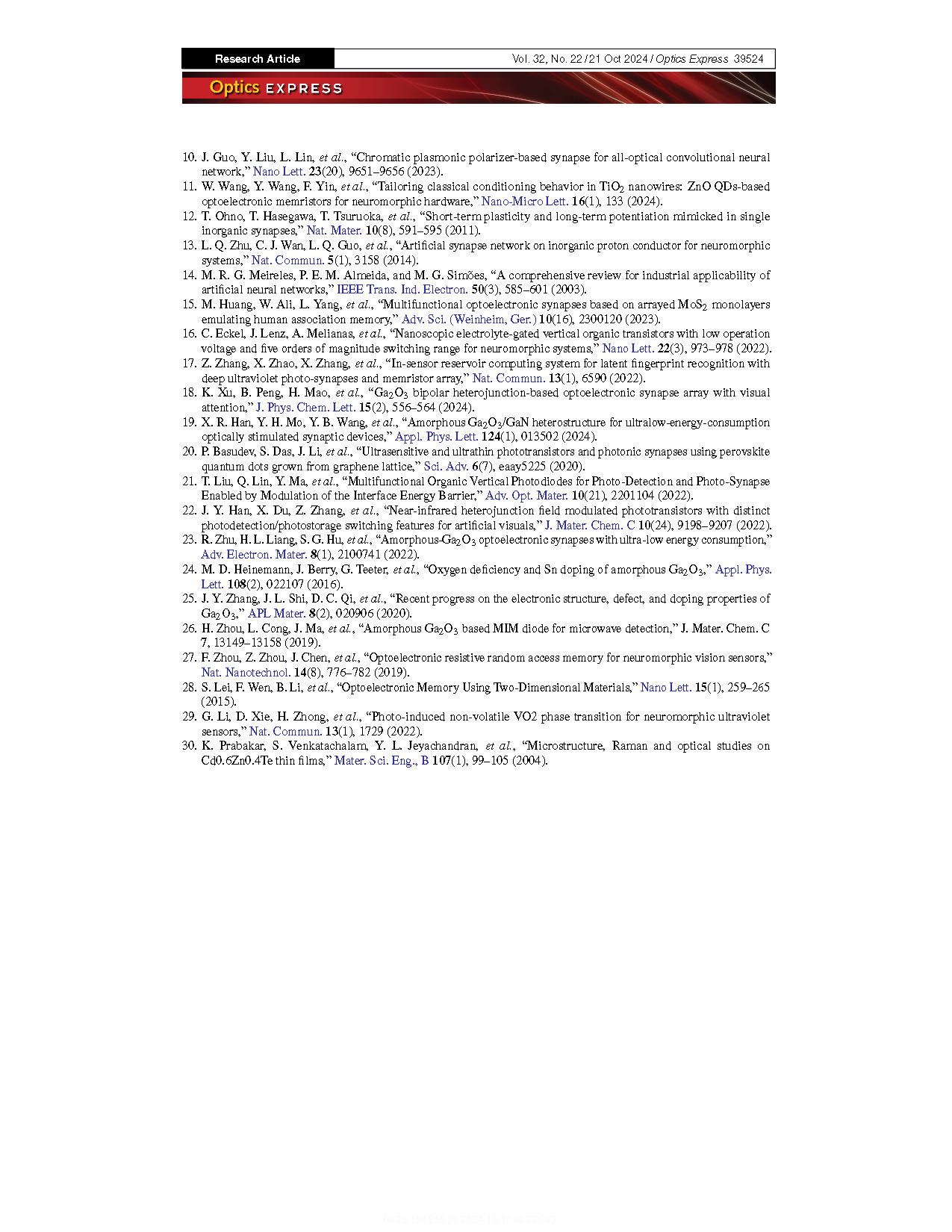
【Member Papers】Researchers from the Nanjing University of Posts and Telecommunications investigated Two-in-one functionality in a 28 × 28 β-Ga₂O₃ array: bias-voltage switching between photodetection and neuromorphic vision
日期:2024-12-11阅读:538
Researchers from the Nanjing University of Posts and Telecommunications have published a dissertation titled "Two-in-one functionality in a 28 × 28 β-Ga2O3 array: bias-voltage switching between photodetection and neuromorphic vision" in Optics Express.
Abstract
Due to the differences in photoresponse characteristics between photodetectors and neuromorphic vision sensors (NVS), simultaneously achieving these two powerful functionalities on a single device poses significant challenges. Here, we demonstrate a two-in-one platform based on a 28 × 28 β-Ga2O3 array that seamlessly switches between photodetector and NVS modes via bias voltage control. By exploiting the differential carrier capture dynamics of deep-level oxygen vacancies in Ga2O3, our device exhibits conventional photoconductivity at low voltages and persistent photoconductivity at high voltages. This enables high-quality optoelectronic imaging as well as excellent image sensing, memory, and neuromorphic visual preprocessing capabilities within a single integrated platform. This work paves the way for multifunctional Ga2O3 optoelectronic devices with applications in integrated sensing and computing.
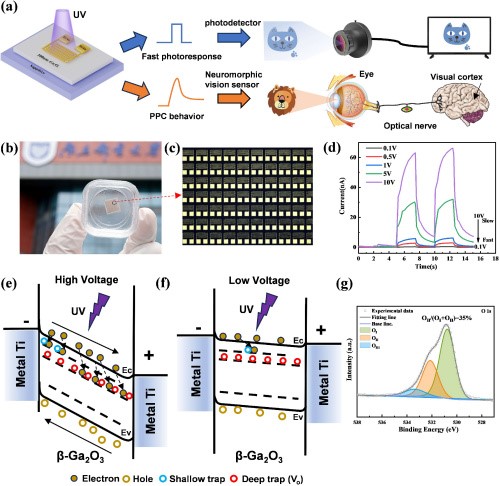
Fig. 1. Design principles, structure, and characteristics of the device. (a) schematic of dual functionality in the β-Ga2O3 Optoelectronic Device. (b) Photograph of the fabricated 28 × 28 array device. (c) Optical microscope image showing a magnified view of a portion of the array. (d) The transient photoresponse curves of the device under different bias voltages. Operating principles under illumination at (e) high and (f) low bias voltages. (g) XPS spectrum of the device.
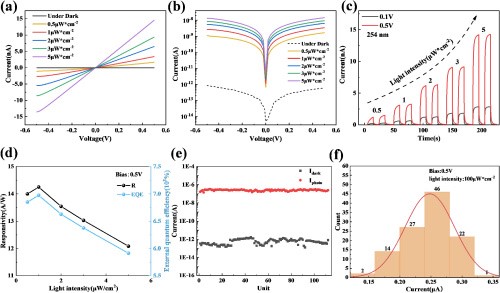
Fig. 2. Characteristics of the photodetector mode under low voltage conditions. (a) Linear and (b) semi-log I–V curves in the dark and under different light intensities. (c) The transient time-dependent I–t performance of one β-Ga2O3-based device array unit. (d) The responsivity and external quantum efficiency under various light intensities. (e) Dark current and photocurrent of all sampling units for the photodetector array. (f) Statistical distribution of photocurrent and its normal distribution curve of sampling units.
DOI:
doi.org/10.1364/OE.539070
